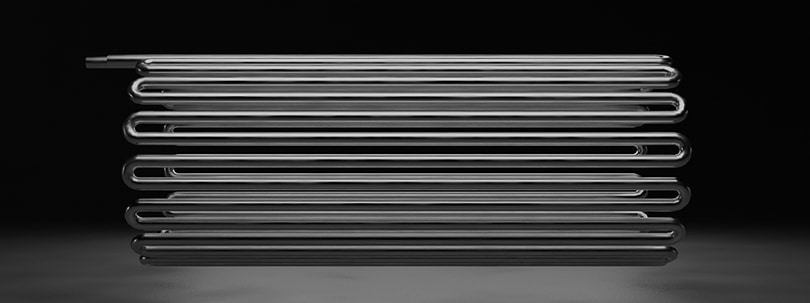If you’re in the market for a new thermal fluid heater, you’ve probably been doing some research to explore and understand your options when it comes to industrial coil heaters.
You have likely learned that many industrial coil heater manufacturers, including Enerquip, produce and distribute helical coil heaters. But while these may be the most common coil heaters on the market, they may not be the best option for a variety of applications.
 Though they are less common, serpentine coil heaters are an ideal option for organizations in a variety of industries. Serpentine coil thermal fluid heaters offer a number of benefits that helical coil heaters do not, including higher efficiency and easier maintenance.
Though they are less common, serpentine coil heaters are an ideal option for organizations in a variety of industries. Serpentine coil thermal fluid heaters offer a number of benefits that helical coil heaters do not, including higher efficiency and easier maintenance.
In addition to offering process benefits, thermal fluid heaters that feature serpentine coils also offer a number of mechanical advantages. If you are preparing to invest in a new industrial coil heater, this is important information to be aware of.
4 Mechanical Benefits of Serpentine Coil Heaters
Thermal fluid heaters that feature serpentine coils set themselves apart from helical coil heaters in a number of ways. Here, we’ll address four of the key mechanical benefits that serpentine coil heaters have to offer.
1. Coil Replacement
Coil replacement in serpentine industrial coil heaters is notably easier than coil replacement in helical coil heaters. With serpentine coil thermal fluid heaters, you can replace one tube at a time instead of replacing the entire coil. This can save you thousands of dollars on the cost of purchasing a new helical coil in its entirety.
Because the coil replacement can be taken care of quickly, you’ll also save hundreds of thousands of dollars by avoiding excess facility downtime.
2. Coil Design
Helical coils experience thermal expansion in all directions. As a result, helical coils fatigue over time, which can cause tube failure or loss of efficiency.
Because of the use of return bends in serpentine coil design, serpentine coils experience thermal expansion in one direction within the confines of the radiant section. As a result, they typically last longer and work more efficiently than helical coils.
3. Tube Wall Thickness
In most cases, helical coils and serpentine coils in industrial coil heaters use Sch. 40 tubes. However, because of the bending process used in manufacturing a helical coil, the actual tube wall thickness of a helical coil is considerably less than Sch. 40 in parts of the coil, weakening the tube. This is not the case with a serpentine coil.
4. Combustion Volume
Serpentine coils allow for a larger combustion volume in the radiant section than helical coils. As a result, radiant chamber temperatures in serpentine coil heaters are lower than those in helical coil heaters. This means that coils and insulation in serpentine coil heaters have longer lives than those in helical coil heaters.
Understanding the Differences Between Serpentine and Helical Coil Heaters
Purchasing a new industrial coil heater for your facility is a big investment. It’s important to gather as much information as you can so you can choose the coil heater that’s right for your organization.
Leaning towards a serpentine coil thermal fluid heater for your facility? While we do build traditional helical coil heaters, most applications can benefit from our serpentine coil technology. Learn more about our serpentine coil thermal fluid heaters!
Have questions about serpentine coil heaters? Talk to the experts! With more than 30 years of experience engineering industrial heating equipment for organizations in a variety of industries, we are leaders in the industry and specialists when it comes to serpentine coil heaters.
Give us a call at (715) 748-5888 or contact us online for more information.
Have a sense of what you might need for your facility? Request a quote today and we’ll be in touch with the details you’re looking for.


